Highlights
Rongai Route 7 Days Highlights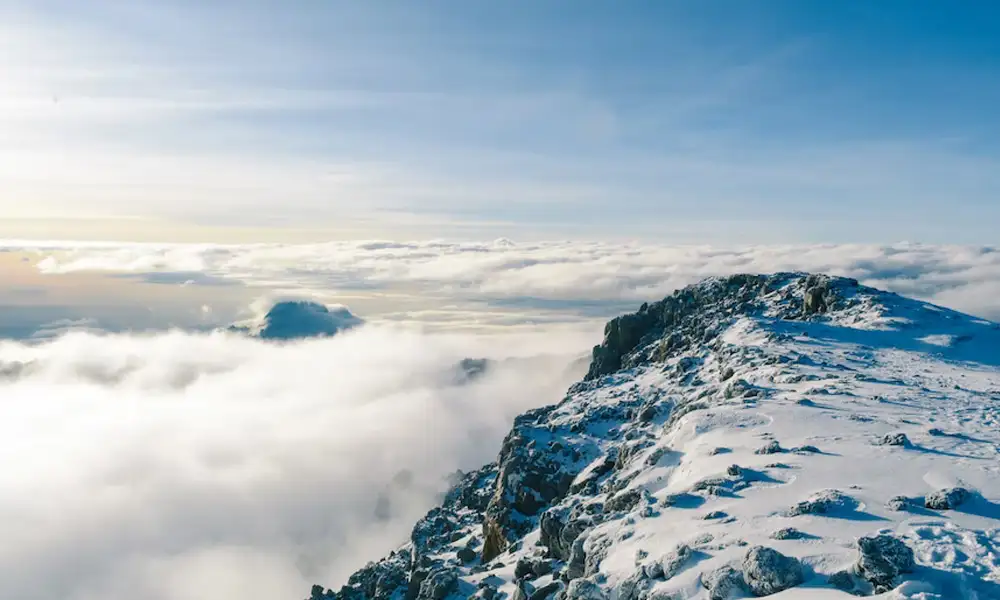
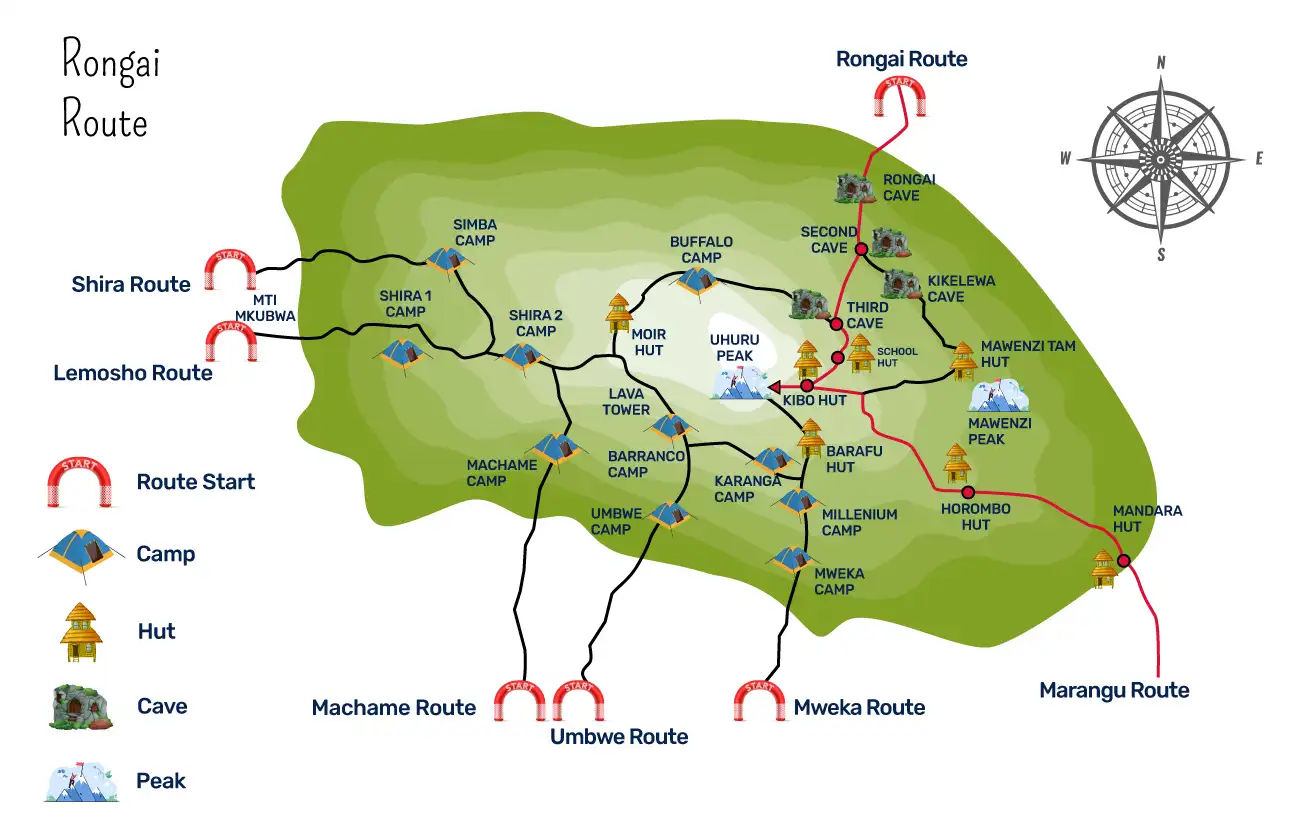
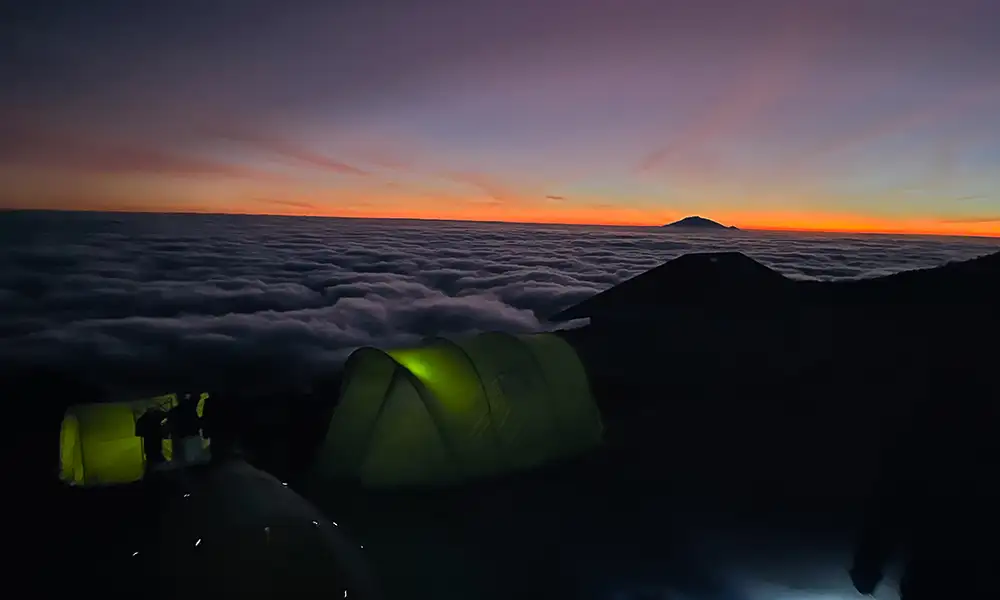
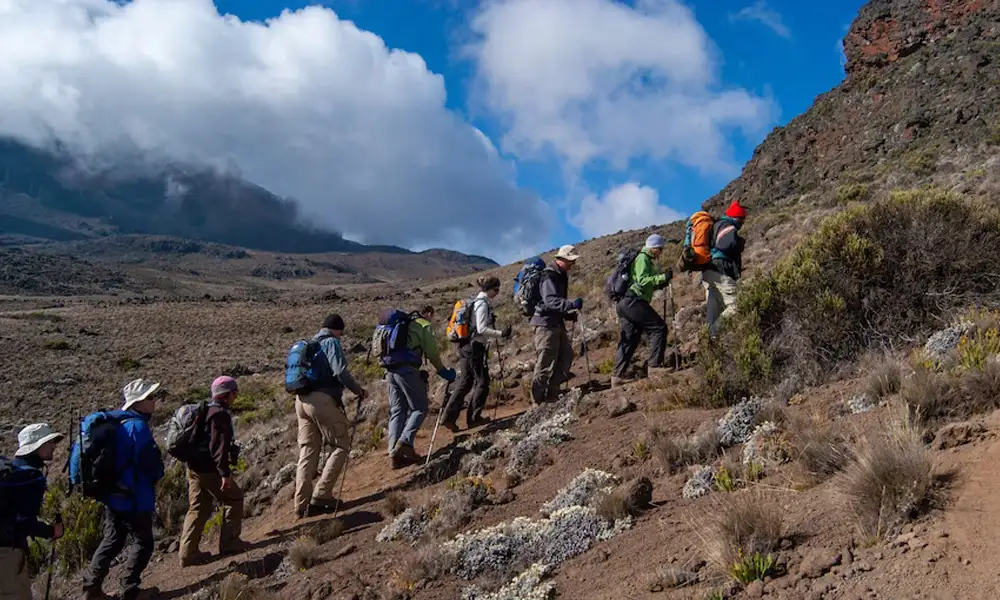


6 nights / 7 days Climb

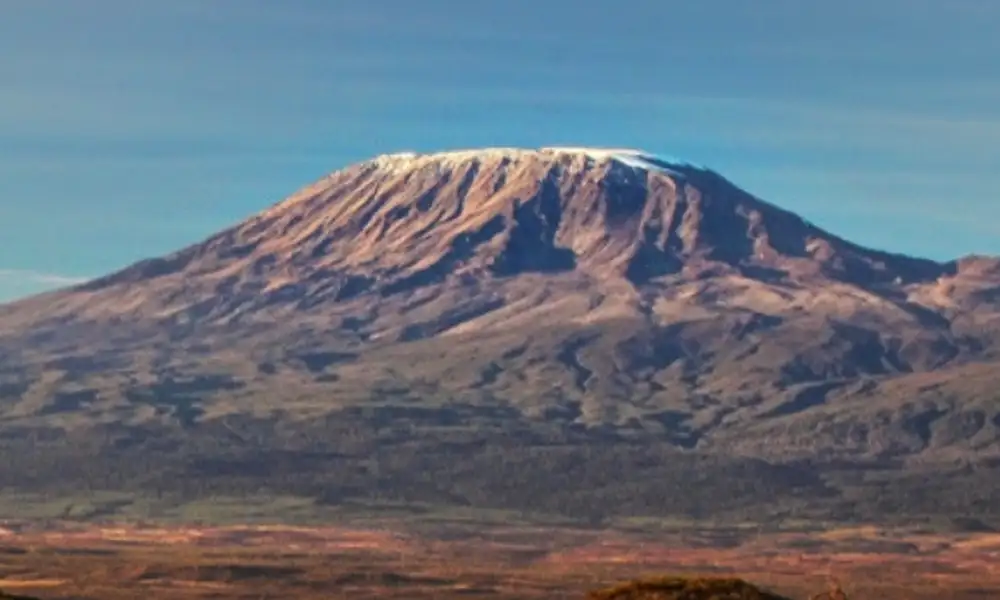
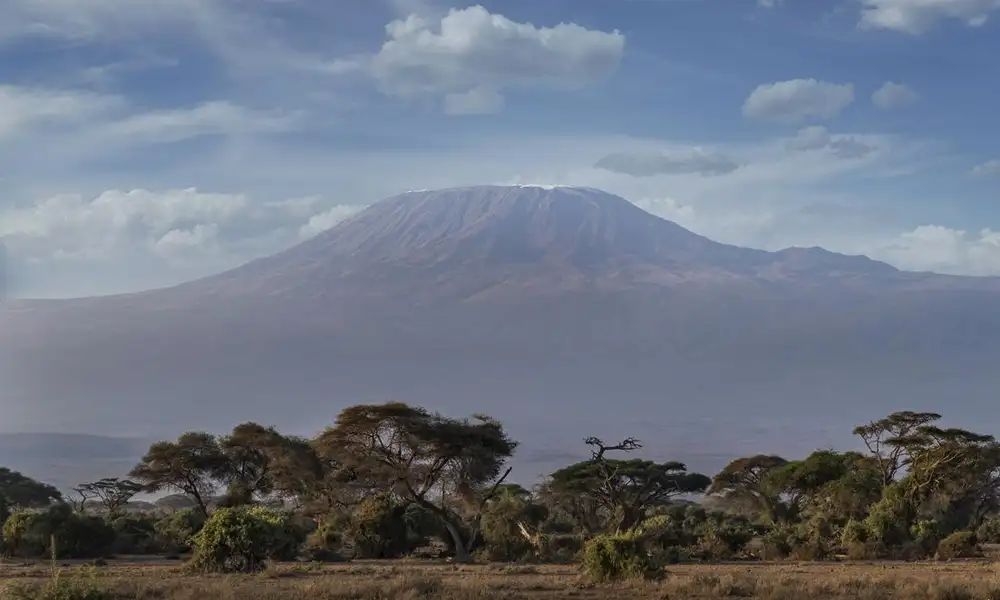
Rongai route ascends Mount Kilimanjaro from the north-eastern side of the mountain, along the border between Tanzania and Kenya. The rongai route retains a sense of unspoiled wilderness.
The Rongai route is the only route that approaches Kilimanjaro from the north. Rongai route is truly one of the more remote and wild trails on the entire mountain. Despite that however, this route offers trekkers plenty of advantages, making it a very appealing option for those looking for a unique experience on Africa’s tallest peak. Due to its remote nature, the Rongai Route is among the least visited of all of the trails on Mount Kilimanjaro. Those who choose this path will experience peace and quiet for much of the trek, encountering few other climbers prior to reaching the Kibo Camp, at which point the trail merges with the Marangu Route for the final push to the summit.
Before that happens however, travelers will often have the path completely to themselves for hours or even days at a time, making this a good choice for those looking for solitude in a unique wilderness setting. Rongai route approaches Mount Kilimanjaro with a slow, steady climb, giving hikers a chance to acclimatize at a steady rate. This not only makes it one of the easier routes up the mountain, it also increases the success rate substantially.
There are few major obstacles to overcome along this trail and the final day before summit day is a short one, giving trekkers a chance to rest, recuperate, and prepare for their climb to the top of Uhuru Peak. Because the Rongai Route starts on the north side of the mountain, not far from the border with Kenya, it is also the driest route on Kilimanjaro as well.
This makes it a good choice for a trek all year round, but especially during the rainy season in April and May. Most of the rain storms tend to stay on the southern side of the mountain, allowing Rongai hikers to stay drier and warmer than those on some of the other, more popular, trails.
Other advantages of choosing the Rongai Route include the potential to spot wildlife, including Colobus Monkeys, in the first few days of the climb. The campsites are also nicely staggered out across the route, ensuring that hikers spend a similar amount of time on the trail each day. And since the trail goes up the north side and down the south side, travelers get a sense of what Kilimanjaro looks like from different perspectives. If there is one criticism of the Rongai Route it is that it may not be as scenic as some of the other routes up Mt. Kilimanjaro. While it is true that the scenery isn’t as varied and dramatic as some of the other trails, there is still plenty to see and enjoy on this path too. And because you’ll encounter so few people, you’ll have an easier time soaking it all in.
The adventure begins with the drive through villages and coffee plantations to the remarkable wooden village of NaleMoru, on the northeast side of the mountain where you meet the porters. The first part of the trail leads through moist rainforest, which quickly becomes lighter on the dry north side. Soon you will reach the heather zone. Overnight in the First Cave Camp (Simba Camp) in the tent at about 9,300 ft altitude. Simba Camp is located close to First Cave, with a magnificent view mountain, where the plains of Kenya.
Hiking: 4-5 hours
Overnight Altitude: ~9,300′
Today’s stage begins in the morning with a steady climb up to Second Cave. The route takes in a long stretch of heath, distinguished by heather, wild flowers and stony paths. As you walk, you can enjoy the view of Kibo and the east-facing glaciers on the crater rim. After lunch, you will leave the main trail and continue along a narrower path towards the jagged peaks of Mawenzi. You will finally reach ‘Second Cave’, which is located in a sheltered valley close to Kikelewa Caves and surrounded by giant senecio plants.
Hiking: 3-4 hours
Overnight Altitude: ~11,300′
This day has been set aside for acclimatization, to improve your chances of reaching the summit, and reduce the risk of you suffering the effects of altitude sickness. Spend the morning relaxing and simply enjoying the surroundings. Around lunchtime, it is time to leave the camp and make your way across the heath, following a narrow path towards the jagged peaks of Mawenzi and Third Cave.
Hiking: 3-4 hours
Overnight Altitude: ~11,811′
Today’s stage takes you to Mawenzi Tarn Hut. Following a short but steep climb up grassy mountainside, you can enjoy a fantastic panoramic view as your reward. The heathland gives way to rocky highlands, littered with large and small volcanic boulders that testify to a previous period of volcanic activity. After a couple more hours on the trail, you will reach the site of your overnight accommodation, which enjoys a spectacular location, nestling in a valley between the towering spires of Mawenzi.
Hiking: 4-5 hours
Overnight Altitude: ~14,160′
You will now find yourself walking through the almost lunar landscape that is known as ‘The Saddle’ and links Mawenzi and Kibo. On arrival at Kibo Huts, located at the foot of the Kibo crater wall, it is time to ready your equipment and warm clothes for the next day’s trek to the peak. Make sure to store your drinking water in a Thermos to prevent it freezing solid. Then spend the rest of the day relaxing and go to bed early to ensure your ‘human batteries’ are fully charged for Kilimanjaro’s ultimate challenge.
Hiking: 6-8 hours
Overnight Altitude: ~15,430′
You will be woken up around midnight, and there is just time for a light meal before you set off into the night. Most people find the tricky terrain, where the trail is littered with loose stones, to be the most challenging part of the ascent. The objective is to reach Gilman’s Point at dawn, so you can make it to Uhuru Peak – the highest point on Kibo – shortly after sunrise. You will stop briefly at Gilman’s Point to enjoy the magnificent view before continuing along the rim of the crater to Uhuru. The last stretch of the climb features an even incline. Depending on the season, you may encounter snow on the last part of the route to Uhuru Peak, which is your final goal: the top of Kilimanjaro and the highest point in Africa. Once you reach the peak at an altitude of 5,895 masl, you can give yourself a pat on the back, enjoy the magnificent view and have your picture taken in front of the Uhuru Peak sign as a lasting souvenir of your achievement.
It is then time to start the descent to Kibo Huts, which you will find passes remarkably quickly. At Kibo Huts, you will stop to enjoy a well-deserved lunch before continuing on to Horombo Huts, where a much-needed night’s sleep awaits.
Hiking: 4-5 hours
Overnight Altitude: ~12,205′
We make the final descent through the rain forest to Marangu Gate. Here we will have lunch and say goodbye to our mountain crew before leaving Mount Kilimanjaro National Park. Drive back to Arusha for a hot shower and a celebratory dinner.
Hiking: 5-7 hours
Overnight Altitude: ~1,843′

The itinerary below describes the 6 nights / 7 day Kilimanjaro climb via the Rongai route. To shorten the below itinerary to six days you skip the night in the 3rd Cave and instead walk straight from the Mawenzi Turn Hut in one day.
Arrive at Kilimanjaro International Airport where you are met after passing through customs. Transfer to preferred Mountain Lodge and have a comprehensive briefing and equipment check with your climbing manager and your guide. Overnight at preferred Mountain Lodge
Accommodations: Preferred pre-booked Mountain Lodge
Meals Included: Dinner
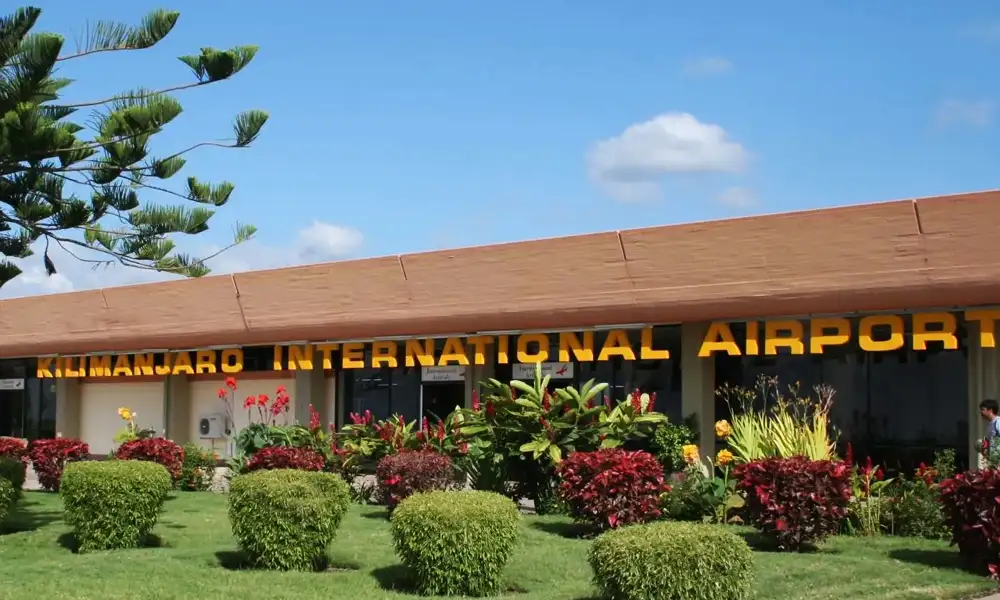

6,398 ft to 9,300 ft, 5 miles, approx. 4 hours
After breakfast in your hotel, you will be given an overall briefing from your guide. At 9am, you will be met by the rest of our guides and porters and then we will drive you to the Kilimanjaro National Park. While officially registering for your climb at Marangu Park Gate, our staff will do a final cross-check of equipment and supplies and pack the vehicles. After the registration, you will be shuttled a further 70 kilometers on poor roads to the Rongai Start Point at 1.950 meters. The trek begins from NaleMoru village and follows a gradual and winding trail that first crosses maize and potato fields before entering the rainforest which is occupied by various wildlife. After 4-5 hours trekking, you will be welcomed with boiled washing water and some snacks before dinner is served in the mess-tent.
Accommodations: Kilimanjaro Camping
Meals Included: Breakfast, Lunch, Dinner
9,300 ft to 11,300 ft, 4 miles, approx. 3 - 4 hours
You will be woken up after your first night on the mountain with a nice cup of coffee, tea or hot chocolate at 06:30am in your tent. After breakfast you start your climb on a trail continuing up towards Kibo. For most of the day you will be walking up slopes flanked with heather and erica with a nice view on the twin peaks of Kilimanjaro - Mawenzi and Kibo and your first glimpse of the ice fields on the Eastern crater rim. Once we approach second cave our cook will welcome you in the camp with boiled drinking water and hot washing water. You can put your feet up with some snacks and a hot lunch. After lunch, there is plenty of time to relax and enjoy the spirit of the camp and to take pictures.
Accommodations: Kilimanjaro Camping
Meals Included: Breakfast, Lunch, Dinner
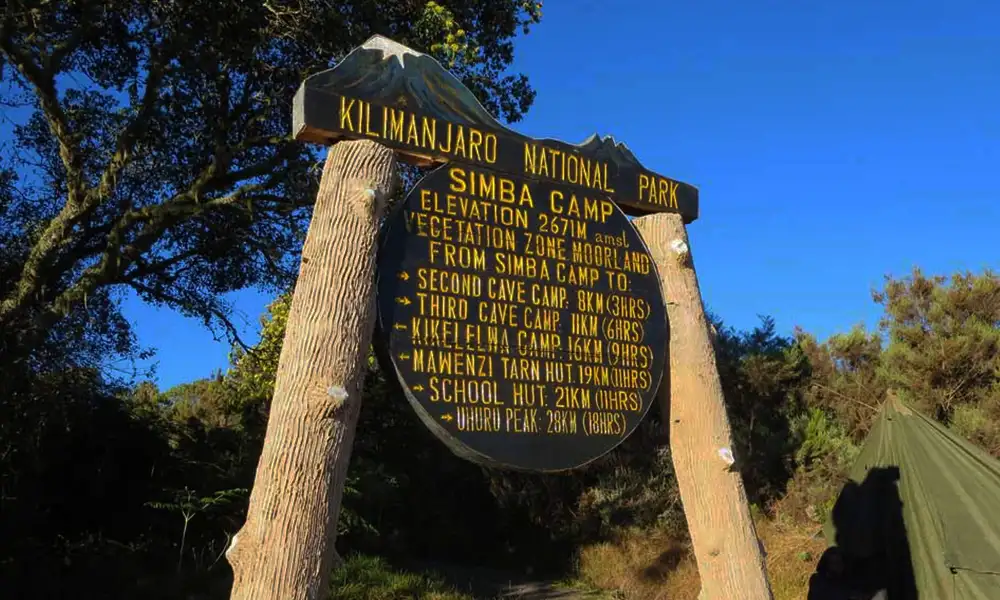
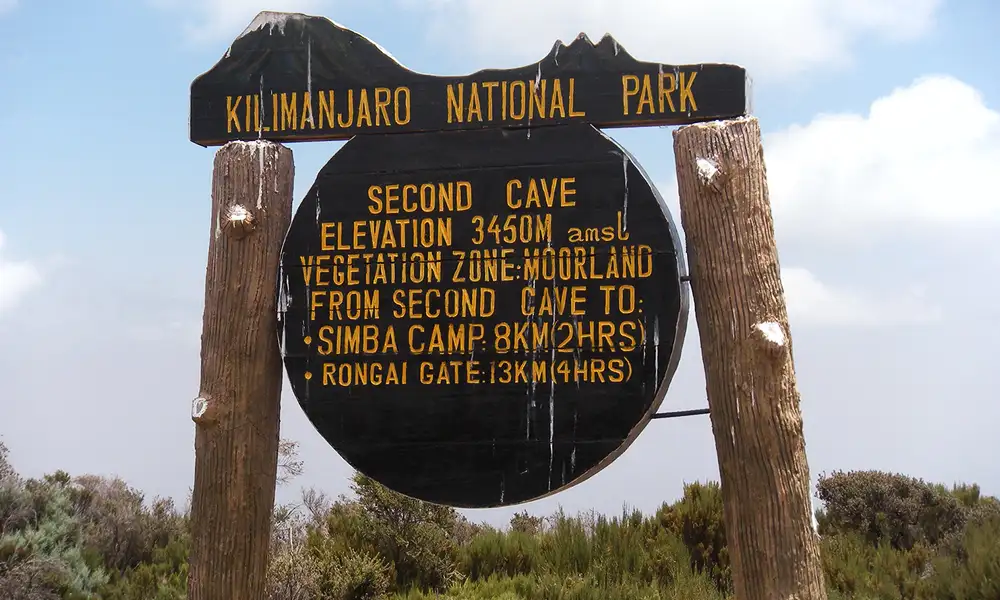
11,300 ft to 11,811 ft, 4 miles, approx. 3-4 hours
From Second Cave the path takes an abrupt south-easterly turn directly towards the jagged peak of Mawenzi. Traversing open moorland you stumble into Kikelewa Camp, situated by a couple of caves by the Kikelewa River with giant groundsels and lobelias flourishing nearby. The views start to open up from Kikelewa Camp you will see for yourself how huge Mt. Kilimanjaro is.
Accommodations: Kilimanjaro Camping
Meals Included: Breakfast, Lunch, Dinner
11,811 ft to 14,160 ft, 3 miles, 4 hours
Though this stage to Mawenzi Tarn is relatively short at less than 4-5km it is usually completed in the morning. The climb is also steep as you gain 660m, the path shedding the moorland vegetation as it climbs steadily. The Mawenzi Tarn Hut is situated in one of the most spectacular settings, in a cirque beneath the jagged teeth of Mawenzi. In the afternoon, we offer you another walk up the ridge in the west for better acclimatization. If you are lucky and the sky is clear, you will enjoy fantastic views of Kibo.
Accommodations: Kilimanjaro Camping
Meals Included: Breakfast, Lunch, Dinner
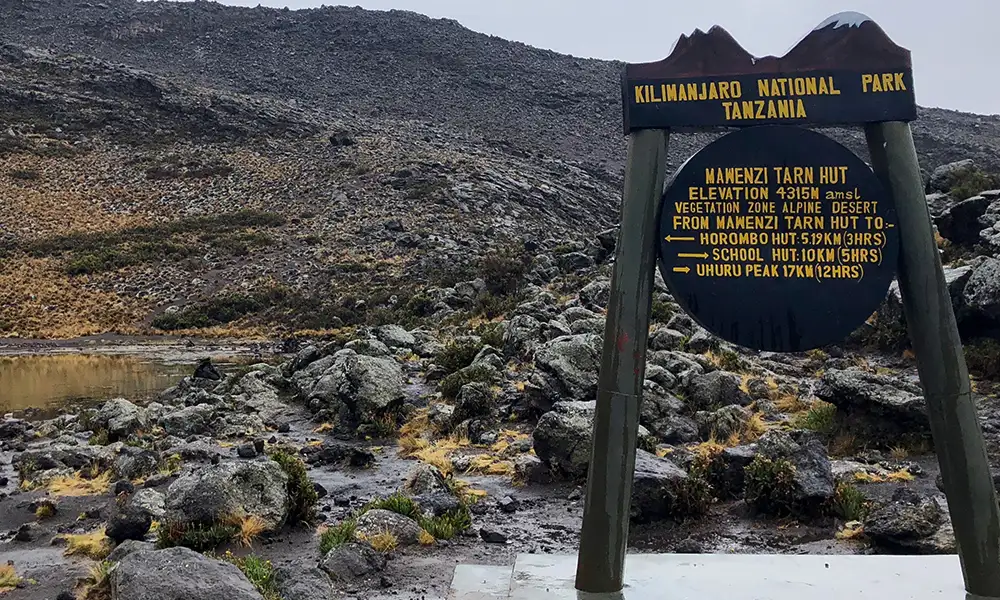
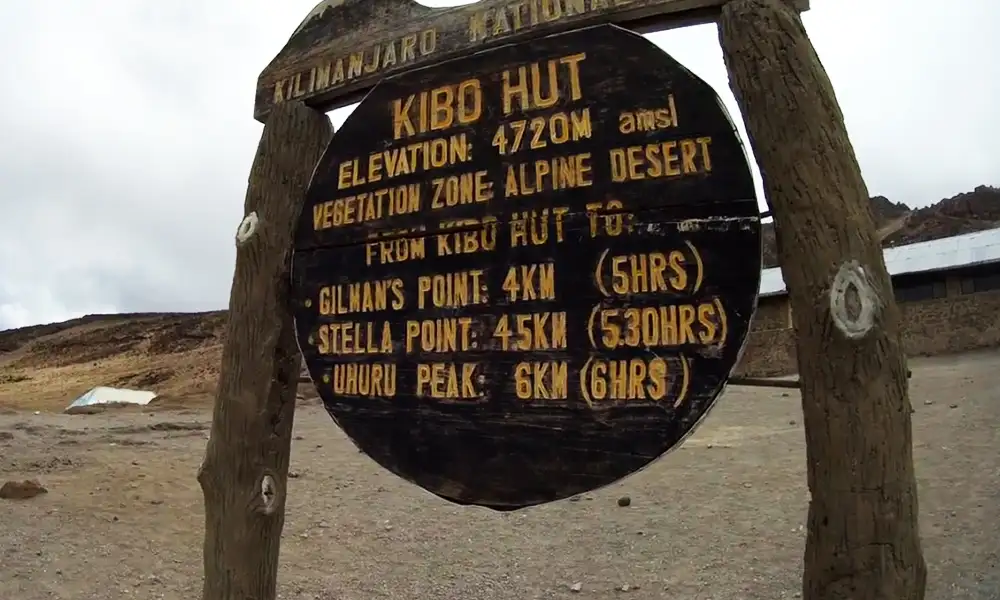
14,160 ft to 15,430 ft, 5 miles, 5-6 hours
This lovely day begins with a slight retracing of your steps before you strike out west-wards, crossing the ridge and dropping down the slope to tiptoe along the beautiful barren Saddle’s northern edge. With views like screensavers through east and west, this day is the most favoured day on the mountain. Our destination for today will be Kibo Campsite, which offers you again a spectacular view off the Kibo.
We will arrive at the camp very early and you get served hot lunch. In the afternoon our guides will give you a final briefing to prepare you for the summit day. Time to relax, to cross check and prepare your equipment and clothing. Dinner will be served very early to give you ample time to rest and sleep. Good food, lots of water and sleep are the keys for a successful summit. We advise you to get to bed before 7pm to be rested for your wake up hot drink at 11:30pm.
Accommodations: Kilimanjaro Camping
Meals Included: Breakfast, Lunch, Dinner
15,430 ft to 19,341 ft to 12,205 ft, 4 miles ascent, 10 miles descent, 6-8 hours ascent, 4-5 hours descent
The wake-up tea will be served at 11:30pm with the departure at midnight. After a hot drink and some biscuits we will start the challenge for the summit. Our initial 6 hour climb begins in the dark with only our headlamps and guides to show us the way. Just remember the golden rule ‘pole, pole’, which means slowly, slowly. There are a number of landmarks on the way: William’s Point at 5.131m, Hans Meyer Cave at 5.259m, that act as milestones, break up the journey and provides you with some measure of your progress.
At Gilman’s Point (5.681m) you will see what might be the most magnificent sunrise in your life so far. After taking some pictures at the sign and enjoying a fantastic view of Mawenzi, we continue our climb on a part of the Marangu Route for 1-2 more hours to reach your ultimate goal – the summit – the highest peak of Africa – Uhuru Peak at 5,985m. Congratulations! You are now standing on ‘the roof of Africa’.
After a few minutes spent at the summit, due to the altitude and the cold, it is important to start our descent. After the descent the rest of our team will congratulate you and welcome you with a hot lunch at Kibo Camp. You will have the chance for a break before we start the next descent to Horombo Hut. After this long day, you can enjoy your dinner and your last night on the mountain.
Accommodations: Kilimanjaro Camping
Meals Included: Breakfast, Lunch, Dinner
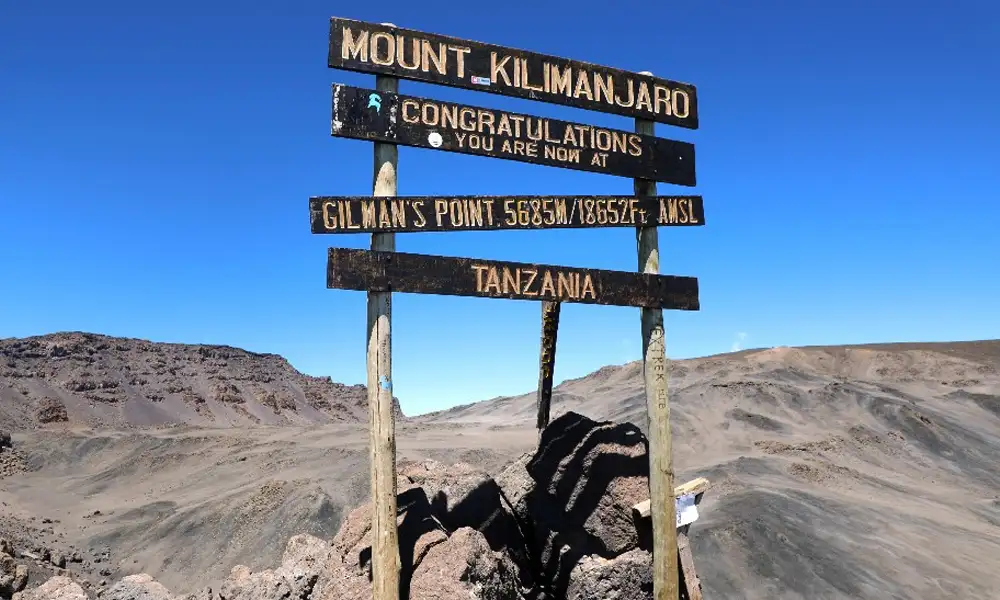
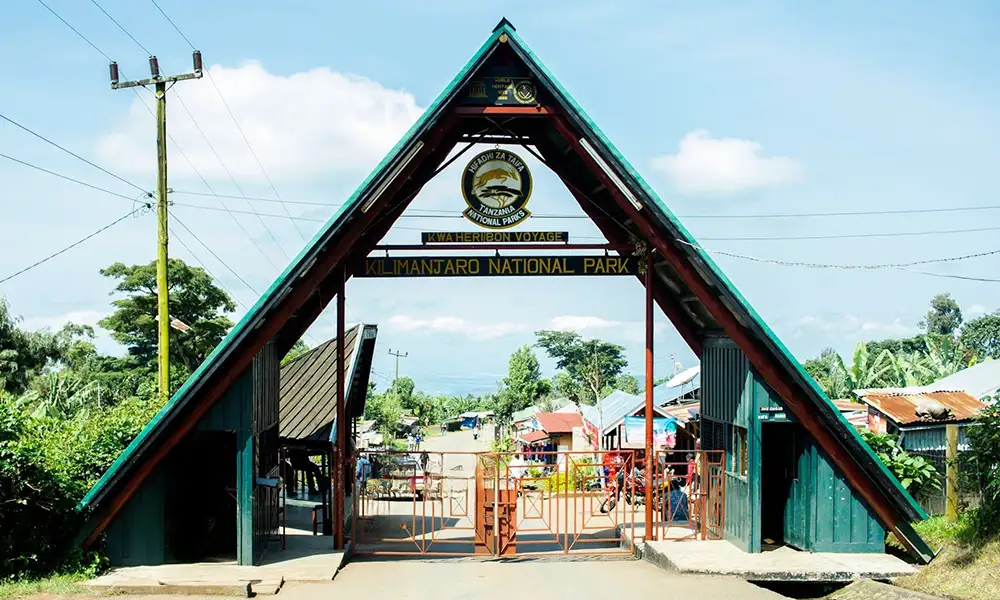
12,205 ft to 6,046 ft, 12 miles, 5-7 hours
Once again you will be woken up for your final celebratory break-fast where our team will thank and congratulate you in their unique, special way! This is also the opportunity for you to say thank you for their support and encouragement and show your appreciation by giving a tip. We continue our descent by passing Mandara Hut down to Marangu Gate. There you will get the chance to have a celebratory beer while the equipment is loaded in the van and then it is off to a restaurant in Moshi for lunch, where you will be presented with your certificate of achievement. After lunch, you will dropped off at your hotel, where you can relax under a long, well deserved hot shower.
Accommodations: Kilimanjaro Camping
Meals Included: Breakfast, Lunch, Dinner
If your time in Africa ends today, our transfer team will drive you back to Kilimanjaro International Airport (JRO) for your departure. If you have booked a safari with us or booked a few days to dissolve into the pristine sandy beaches and tropical waters of Zanzibar, we will be there to help you comfortably transition from your climb onto your next Tanzanian adventure.






The exact trekking distance for the Rongai Route is 79km or 49 miles. The shortest number of days required for Rongai Route is 6 days, but by the time you have added on arrival and departure days it is 9 or 10. However, as it’s considered the easiest route on the mountain it is actually best done over 7 days to increase your chances of success.
The summit success rates for the Rongai Route are greatly increased with the longer trek option. Whilst there are no official statistics, the average success rate across all operators is 80% for the 7 day trek and a 65% success rate for the 6 day trek. However, we have a 95% summit success rate for both Rongai route treks. Read more about how many days it takes to climb Kilimanjaro to know why we recommend longer treks.

6 nights / 7 days Climb


6 nights / 7 days Climb


6 nights / 7 days Climb


6 nights / 7 days Climb


7 nights / 8 Days

